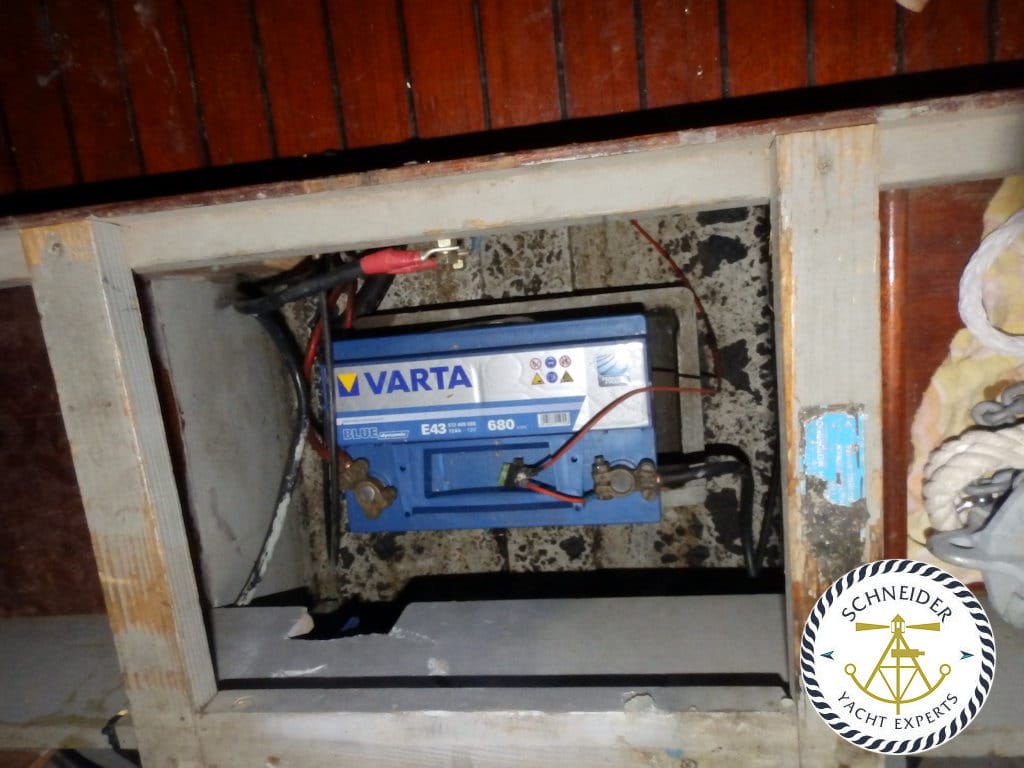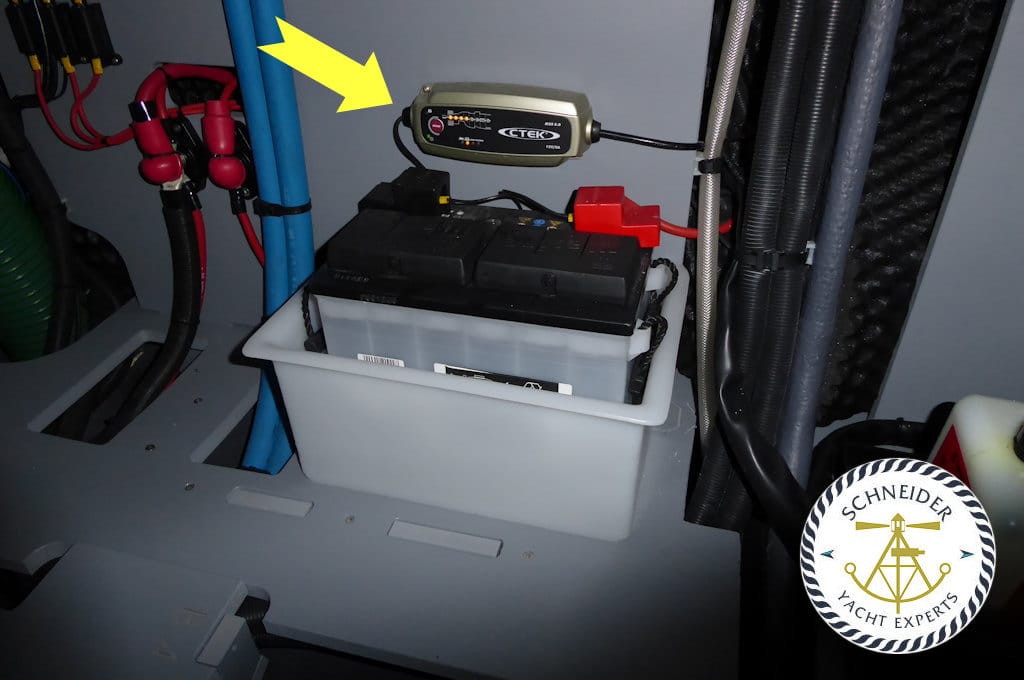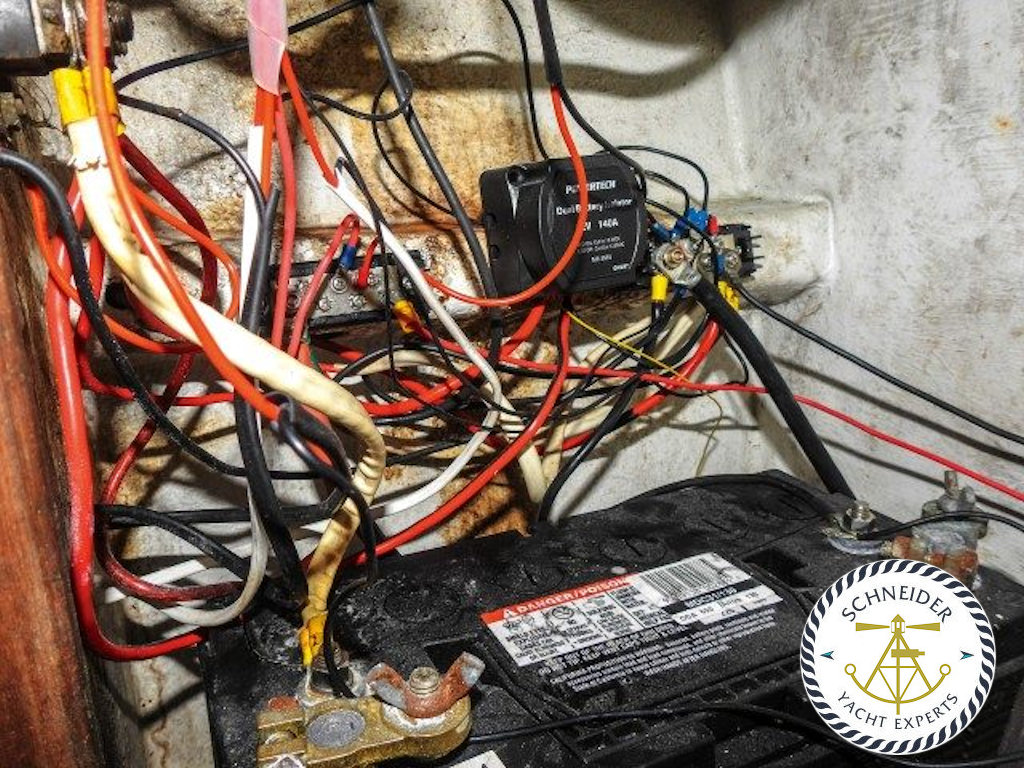A few years ago, we were spending a few days with friends in Kolorat Bay on Cres when circumstances suddenly arose that made it necessary to return home quickly.
And on a day when the weather was anything but inviting.
Nevertheless, we decided to make the passage to Punat and it wasn’t long before we were shaken to the core by a stiff bora.
The bow banged continuously from one wave trough to the next and the spray swept over the flybridge.
In moments like these, my thoughts always revolve around all the critical systems on board.
And if I have an experienced skipper at my side, I’m happy to hand over the helm now and again to check that everything is running smoothly.
One area that I pay particular attention to is the battery bank.
In addition to the two starter batteries, there are also 4 x 150 Ah consumer batteries, which you want to be well secured in such situations.
After all, depending on speed and sea state, multiple G-forces can act on the hull, which can quickly give such a battery bank a total dynamic weight of 500 kg or more.
And these should remain in place if at all possible.
You would think this would be a matter of course.
And yet – although this topic is as old as boating itself, I keep coming across installation situations during inspections that make my hair stand on end.
It’s almost unbelievable how much the potential danger of inadequately secured batteries can be underestimated.
Common errors during battery installation
- No or only inadequate protection against movement
- No protection against moisture / water
- No pole covers
- Faulty pole terminals
- Insufficient ventilation
Unsecured batteries represent a high risk potential!

What the standards say
There are basically two standards that set the international benchmark in terms of safety on boats: in Europe the Recreational Craft Directive (RCD for short) and in the United States the American Boating and Yachting Council (ABYC for short). These recommend the following with regard to the attachment of batteries, for example:
RCD: “The mobility of the battery must not exceed 10 mm when a force equal to twice the weight of the battery is applied”
ABYC: “The movement of the battery shall not exceed 1 inch when a force equal to 2 times the weight of the battery… is applied for a period of 1 minute.
The RCD also specifies the following:
- Metallic objects must not be able to come into contact with the poles
- Metallic fuel lines that run at a distance of less than 30 cm above batteries must be electrically insulated
- Spring clamps must not be used

Also take care not to install electrical or electronic components directly above a battery.
Acid vapors are very corrosive and drastically shorten the service life of such devices!
A veritable battery horror cabinet…
Such installations are obviously negligent and yet not uncommon.
By the way: avoid using wing nuts on the pole terminals and use hexagon machine nuts instead to ensure sufficient tightening torque.

With this in mind…
… take a regular look at your battery installations and check whether they are safe.
And if in doubt, be sure to consult a specialist.
Wishing you a good and safe start to the season

Ing. Ingolf Schneider, MASc (AssocRINA)
Certified surveyor for boats and yachts up to 24m (LLoyds Maritime Academy, American Boat and Yacht Council).
Member of the Royal Institution of Naval Architects.
